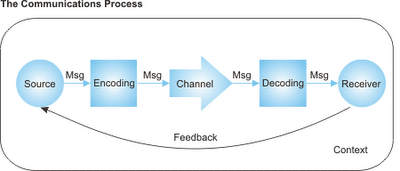MODULE TWO (2) : LANGUAGE & COMMUNITY
Jamaican Creole is considered a language like any other for two basic reasons:
1. It possesses the characteristic features of a language AND 2. It performs the functions of a language.
Jamaican Creole is considered a language like any other for two basic reasons:
1. It possesses the characteristic features of a language AND 2. It performs the functions of a language.
Below is a brief outline of some of these linguistic features:
PHONOLOGY: the sound system of a language. Patois has a sound system independent of English.
- Jamaican Creole does not use the 'th' sound but substitutes with two other sounds: the 't' sounds as in 'tik' for the English 'thick' and the 'd' sounds as in 'dem' for the English 'them'.
- Jamaican Creole does not pronounce the 'h' sound at the beginning of English words. Therefore English 'hour' becomes 'our'. Similarly there is the tendency to hyper-correct and pronounce the 'h' sound at the beginning of words that do not require it, therefore English 'egg' becomes 'hegg' and 'exam' becomes 'hexam' and so on.
LEXICON: the vocabulary of a language. Although the lexical items of Patois are English based, many are used in non-English ways.
- Some Patois words that appear to be similar to English words do not carry the same meaning, e.g. 'Ignorant' in Patois means easily angered, very upset and not lacking knowledge (which is the English definition). Another example is 'Belly' that in patois can refer to pregnancy.
- Some English words are compounded to create nouns not present in English for example 'Foot bottom' for the sole of the feet and 'Eye water' for tears.
- Some Creole words are formed by reduplication (base words are repeated to form new words). For example friedi friedi to mean fearful or timid, chati chati to mean talks excessively or out of turn.
- Some Creole words are adopted from other non-English languages, eg, maroon-Spanish, pikni-Portuguese, unu, (you plural) -Igbo
GRAMMAR: rules governing the correct use of language
- Pluralization is signaled by the addition of the 'dem' after the noun eg. The people dem. Or to emphasize the numerical marker- 'de two book dem'.
- Possession is not signaled, as in English, with the apostrophe 's' suffix but by the word 'fi' as in 'A fi mi handout'
- Zero Copular construction. A Copular links the subject to the predicate. It is derived from the verb 'to be'. Creole can have a zero copular structure eg. Jane sick for Mary is sick in Englich or Jane de home for Jane is at home.
SYNTAX: the proper agreement of words in a sentence
- Patois mainly uses syntax to highlight certain elements within a sentence while English often uses pronunciation by verbally stressing that which is to be emphasized. For example Creole: Is Susan eat di chicken? versus English Susan ate the chicken? Creole: Is di chicken Susan eat ? versus Susan ate the chicken?


Very helpful!
ReplyDeleteHappy to hear that Tish!
Deletevery good informatioN!!!! LOVE IT
ReplyDeleteThat's good news Chev!
DeleteThank you for this!
ReplyDeleteYou're welcome Chaunte!
ReplyDeleteSubstantially helpful. Thank you !
ReplyDeletethank you for this!!!
ReplyDeleteThank you I understand it way better now
ReplyDeleteHow then would you define their use of "mi?" What meaning does it carry?
ReplyDeletemi is me or my in english depends how it is used
Deleteomg..... this was so helpful and informative
ReplyDelete5 starts
Love this and am looking forward for more information
ReplyDeletehello
ReplyDeletedo you need help with this assignment? You can inbox me for further discussion on it
Hey writter i got your point for the wriiting the assignment but and i got a option of doning the same and i say that better then this is a write my assignment , which provide the things and more help you to get the help.
ReplyDeleteThank you!
ReplyDeleteExcellent
ReplyDelete